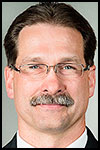Fred Hertel: Not your father's fire service
The menu of tasks undertaken by fire service agencies has undergone extensive expansion and transformation over the last three decades, and so has the roster of personnel and tools taking on the mission.
But the sweeping changes have left many districts strapped for means and money, especially those serving rural areas like Yamhill County’s West Valley.
The technology and science behind modern fire service is truly incredible. Advancements have been achieved in thermal imaging technology to enhance fire visibility, vehicle location systems to ensure closest unit response and foam enhancements which improve fire suppression capability, among many others.
The addition of emergency medical service is another example of the sweeping changes occurring in the mission of fire departments across the nation. Ambulances now carry equipment and supplies equal to those in many hospital emergency rooms, and ambulance staff are trained to extremely high standards.
All these improvements have increased the capabilities of our underlying mission — protection of life, property and the environment.
With that said, districts around the country were designed to extend fire protection services for their citizens, much of the impetus coming as a direct result of large-scale incidents devastating cities, economies and natural resources. Citizens affected by these events responded by creating the basis for the fire service model we employ today.
Over the last five decades, however, many fire services have experienced a decline in large blazes, due to promotion of fire-safety construction, enhanced construction materials, better fire code enforcement and effective public education.
These changes have been instrumental in making our lives safer. However, as fire services were experiencing a decline in large-scale incidents, their scope began to expand to include additional responsibilities associated with emergency medical service, hazardous material response and situations like mass shootings, acts of terrorism, natural disasters and the like.
The expansion and transformation of duties has culminated in call volumes soon to become unmanageable without new direction. In the Sheridan Fire District, for example, incident responses have grown from 1,023 in 2008 to 1,680 in 2018, a 61 percent increase in just a decade.
The nation’s fire services have traditionally relied mostly on volunteers. In the 1980s, approximately 80 percent of America’s firefighters were volunteers.
That figure has decreased to approximately 65 percent, and the erosion is continuing. Although many agencies still proudly term themselves wholly or primarily volunteer, the sheer number of volunteers has dropped.
The Sheridan Fire District has a proud history as a large volunteer force, but a roster totaling 47 at the turn of the century is down to 24 today. Meanwhile, the volunteer force has declined from 20 to four in the neighboring West Valley Fire District.
This trend of fewer volunteers has required the fire service to reconfigure its personnel models to meet today’s service requests. For many fire districts, this retooling has included development of creative pathways for volunteering.
Services now supplement their main force of traditional resident volunteers with students, interns, out-of-area volunteers, support service volunteers and single-role volunteers. In exchange for their commitment, students, interns and resident firefighters are offered formal education and practical experience in preparation for paid fire service careers.
Out-of-area programs allow individuals residing beyond an organization’s service area to respond to emergencies. This is often practiced near cities with no volunteer programs of their own.
Support service volunteers perform peripheral duties to enhance emergency response capabilities, such as on-scene firefighter rehab.
Single-role volunteers function under specific training for a specific role. They may serve, for example, solely as emergency medical providers or water tender drivers.
There is great value in both these programs. However, the wide range of variations poses administrative challenges.
Some agencies have transitioned from an all-volunteer model to a combination volunteer and career model. They typically mix part-time with full-time staffing on the career side.
The introduction of career staffing into a formerly all-volunteer system creates budget strains that often result in deferred maintenance or facility and equipment replacement. The West Valley Fire District has followed this path, which has limited its vehicle replacement ability, leaving it with one of four ambulances frequently in the repair shop.
Collaboration and partnerships between fire districts remain one way to help deflect budgetary strains, at least temporarily.
For example, Sheridan and West Valley share a chief, as do Carlton and Lafayette. And almost all districts are evaluating opportunities to collaborate and partner with neighboring districts in some fashion.
The transition from traditional all-volunteer to volunteer-career models often requires revisiting the original funding mechanism to establish a sustainable funding solution.
Under Oregon tax law, fire districts can request additional funding only through bond issues or local option tax levies. They can prove hard to pass, and don’t serve to supply the district with a permanent increase in its base rate.
The only way to change a fire district’s base rate is through the process of creating a new district by merger or consolidation. Many fire districts are grappling with this process as a method of creating a viable, self-sustaining system of fire service delivery.
The fact that most expenditures within fire services are outpacing taxing capacity, combined with the expansion of the work scope and increasing demand for paid personnel, has created challenges within the industry.
All fire districts have great volunteers and paid staffers committed to addressing these issues.
If you are interested in volunteering, or just in joining in the conversation about the fire service future, please contact your local agency. As we come together on this topic, we are confident we can achieve the optimum outcome.












Comments